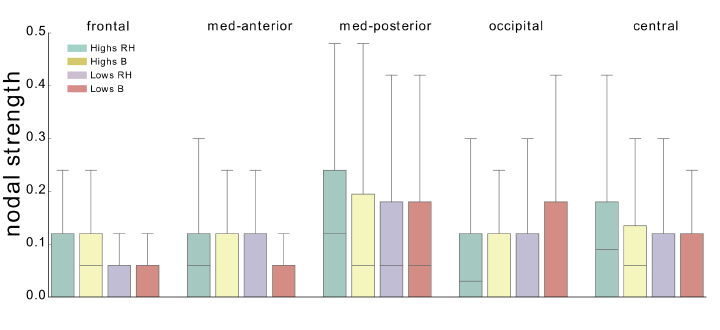Spectral and topological analysis of the cortical representation of the head position: does hypnotizability matter?

Abstract
The aim of the study was to assess the EEG correlates of head positions, which have never been studied in humans, in participants with different psychophysiological characteristics, as encoded by their hypnotizability scores. This choice is motivated by earlier studies suggesting different processing of the vestibular/neck proprioceptive information in subjects with high (highs) and low (lows) hypnotizability scores maintaining their head rotated toward one side (RH). We analysed EEG signals recorded in 20 highs and 19 lows in basal conditions (head forward) and during RH, using spectral analysis, which captures changes localized to specific recording sites, and Topological Data Analysis (TDA), which instead describes large-scale differences in processing and representing sensorimotor information. Spectral analysis revealed significant differences related to the head position for alpha1, beta2, beta3, gamma bands, but not to hypnotizability. TDA instead revealed global hypnotizability-related differences in the strengths of the correlations among recording sites during RH. Significant changes were observed in lows on the left parieto-occipital side and in highs in right fronto-parietal region. Significant differences between the two groups were found in the occipital region, where changes were larger in lows than in highs. The study reports findings of the EEG correlates of the head posture for the first time, indicates that hypnotizability modulates its representation/processing on large-scale and that spectral and topological data analysis provide complementary results.